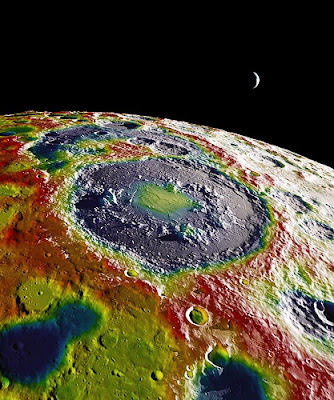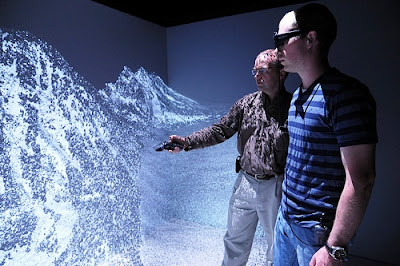The future of GIS is bright. For those students who are willing to learn the ins and outs of geographic software then the future of GIS is golden. We think of a geographer as someone who studies the earth, but they are much more than simply cartographers. The Earth is not just a surface made up of rocks, mountains, rivers and forests. It is also dynamic as much as it is static, a contradiction until you consider things like volcanos and tsunamis. Minerals and mining also play a part in GIS.
GIS AND SPACE EXPLORATION
Image via Flickr by NASA Goddard Space Flight Center’s Photostream
The U.S. Geological Survey are the people who approved the THEMIS camera and optics for the Mar’s Odyssey mission. The probe was able to take over 20,000 images of the surface of Mars. Using software scientist have slowly pieced together each photograph to produce a map of the Martian landscape. This project is in thanks to the power of GIS and represents just a small percentage of jobs for highly qualified GIS graduates.
GRAIL AND THE MOON
Image via Flickr by NASA Goddard Space Flight Center’s Photostream
In 2012, NASA sent a pair of spacecrafts to the moon. Their goal was to study lunar gravity, but a side objective of the mission included information used by GIS scientists to explore the topography of the moon, including the properties of moon rocks.
USING GIS TO CLOSE THE PRODUCTION GAP
Image via Flickr by Idaho National Laboratory
There are a handful of minerals and elements that modern societies in developed countries are using so fast that geologists consider them peak elements. Oil is a peak resource and employing GIS helps geologists to find new deposits of peak minerals and peak elements.
Since oil was first used as a fuel, the process of detecting it continually improves. In the early years, the best method was to drill a well, which is a detection method that is costly and risky. GIS software has made great strides in being able to help geologists map sections of the Earth in 3-D. That discovery was only made significant by the ability to for mapping software to interact with GIS software.
SOCIALLY DRIVEN PRODUCTS ALSO CREATE GIS JOBS
The hot jobs in GIS are in software interaction and development. It is much easier for a geologist to study the surface and underlying formations of the Earth, which are clues to the types of minerals and natural resource that the study section of Earth might hold, through software rather than out in the field. That technology reduces exploration time and increases the accuracy of site testing.
There are tons of other jobs that employ GIS. Google Earth, Google Maps, and other socially driven products all have GIS at their core. The entry-level degree for GIS is a Bachelor’s degree in GIS, according to the Bureau of Labor Statistics. The outlook for new jobs is also growing faster than average jobs. This is perhaps due to the demand for minerals and natural resources by highly developed countries.
The future of GIS is full of potential for those interested in getting a degree in the field. These are just a few of the exciting projects and opportunities that are on the horizon for those working in the GIS field.
Source : GIS.USC




0 comments:
Post a Comment